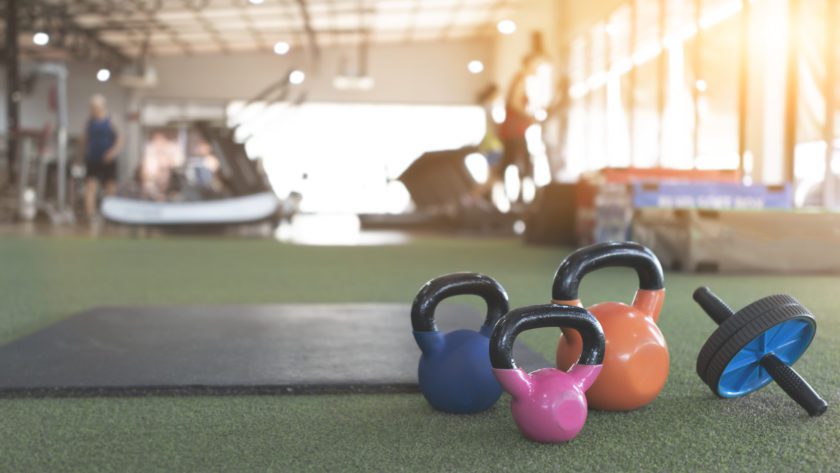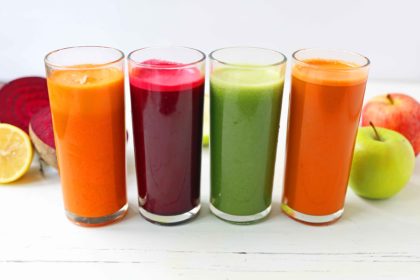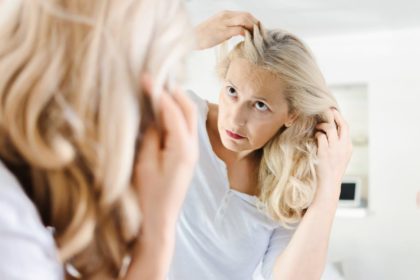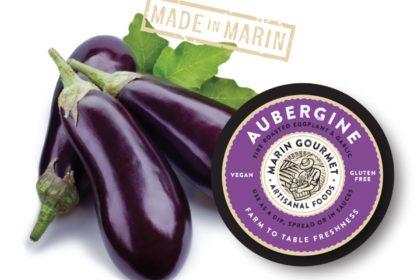If you’ve been working out at home for the last couple of months, you may be happy to learn your gym will be reopening its doors soon. Are you eager to go back to the gym and put away all the home exercise equipment? If so, is it safe to go back to weight rooms, cardio machines, and fitness classes? I talked with KRON 4’s Morning News anchor, Marty Gonzalez, and offered some tips to help you decide.
Is It Safe to Go Back?
Going back to the gym will be riskier than staying home, but staying home and being a “COVID potato” carries its share of risk too.
Can You Get COVID-19 from Sweat?
You cannot get the COVID-19 from sweat alone, but sweat can pick up mucus from the nose that contains the virus. Exercise can trigger a runny nose.
- 27-74% of athletes have “exercise-induced rhinitis” or “runner’s rhinitis”, that is, their noses run when exercising. One cause of this type of rhinitis could be the increased exposure to environmental irritants from increased respiration.
- Other bacteria, fungi, and viruses that cause skin infections thrive in sweat, particularly warm, moist areas.
- Sweat gets left behind on exercise equipment, mats, machines, handrails, towels, saunas, showers, swimming pool decks, locker room benches, toilet/door handles.
Indoor Air Quality (Move Inside Air Out)
- When you’re exercising, you and the people around you will be breathing hard. That means more respiratory droplets will be expelled into the air.
- If you’re working out near someone who’s not wearing a mask, it’s likely you could be inhaling whatever he or she is expelling.
- In general, experts believe colds are more common in the winter because more time is spent indoors around other people.
- Some fitness studios are moving their cardio equipment outdoors. Respiratory droplets disperse rapidly outside, so the viral load is low.
- Gyms should be well-ventilated with a system that refreshes indoor air with filtered air coming in from the outside.
- If there is no air filtering system, the gym should have adequate cross ventilation (wide open doors/windows on opposite walls) to disperse the respiratory droplets and move inside air out. Droplets can linger and stay inside small, enclosed spaces.
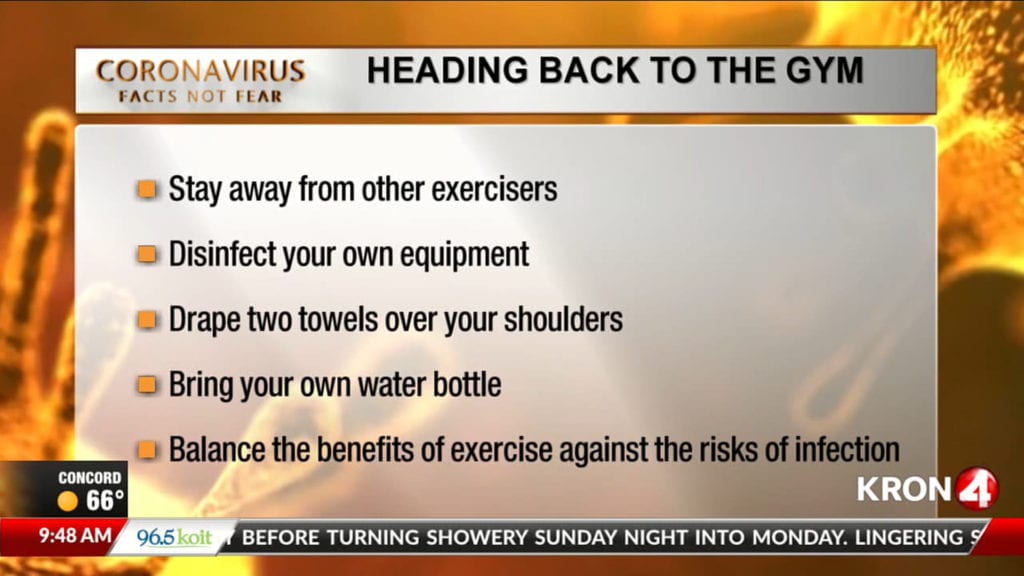
Ways to Stay Safe in the Gym
- Stay away from other exercisers (‘Heavy Breathers’). A gym is an exercise environment where there’s a lot of heavy breathing (e.g. running, rowing, cycling, aerobic dancing) and forced expirations (e.g., weight lifting, Pilates, martial arts).
- In a relatively high density environment, social distancing in a gym is particularly essential. Treadmills, ellipticals, rowers, bicycles should be moved farther apart or taped off.
Mask or No Mask
- Masks make sense in a gym, BUT…wearing one while exercising also means masks will get wet from exhaled moisture.
- Wet masks reduce their anti-microbial effect. When a mask is wet, resistance to airflow and venting (area around the sides of the mask) are increased, so the mask is less efficient at filtering pathogens.
Keep Clean
First, wash your hands before entering the gym. Signing in at the gym should be touch-less with gym employees wearing a mask or standing behind sneeze guards.
- Disinfect your own equipment. Gyms should be stocked with disinfectant spray and towels or with EPA-approved bleach wipes. Per a previous KRON4 health segment, Germs You Get from Gyms (Sept 2018), athletic facilities are breeding grounds for a host of germs, such as bacteria, flu virus, fungi, and other pathogens.
- Clean the equipment (weights, bars, benches, machine rails, knobs, seats, etc.) BEFORE and AFTER use. Don’t depend on the person who used it before you to do a thorough cleaning.
- Cleaning exercise equipment is tricky. There are so many touch points and people grasp the equipment in different places.

Thoroughly wet equipment, let stand 30 seconds before wiping. When spraying a disinfectant, you have to let it sit for at least 30 seconds to kill the germs BEFORE wiping. Clean any grime or dust off first. So, plan on spending more time in the gym!
- WARNING! Per product directions, Clorox Cleaner + Bleach should be washed off hands thoroughly with soap and water and should only be used in a well-ventilated area. If your gym is not well-ventilated, it can accumulate a plume of hazardous chemicals.
Other Smart Ways to Stay Safe
- Drape two towels over your shoulder. Keep one for wiping sweat from your hands and face.
- Use the other towel for covering the weight bench or yoga mat. Use a towel where you can distinguish the top side from the bottom, so you don’t sit on the ‘contaminated’ side.
- Don’t touch your face. Use your towel.
- Bring your own water bottle, so you don’t drink out of the water fountain.
- Balance the benefits of exercise against the risks of infection.

![]() The Takeaway: The risk at the gym will never be zero. Find out how fastidious the gym is about disinfecting equipment and facility, wearing masks/gloves, and enforcing social distancing, then weigh the risks of virus transmission and if you have any underlying health conditions against the health benefits of exercise. Consider your age (65 years old and older) and any underlying health conditions.
The Takeaway: The risk at the gym will never be zero. Find out how fastidious the gym is about disinfecting equipment and facility, wearing masks/gloves, and enforcing social distancing, then weigh the risks of virus transmission and if you have any underlying health conditions against the health benefits of exercise. Consider your age (65 years old and older) and any underlying health conditions.
Per the CDC, underlying health conditions include:
- Chronic lung disease or moderate to severe asthma
- Serious heart conditions
- Immunocompromised (e.g., cancer treatment, smoking, bone marrow or organ transplantation, immune deficiencies, poorly controlled HIV or AIDS, and prolonged use of corticosteroids and other immune weakening medications)
- Severe obesity (a BMI or body mass index of 40 or higher)
- Diabetes
- Chronic kidney disease undergoing dialysis
- Liver disease

